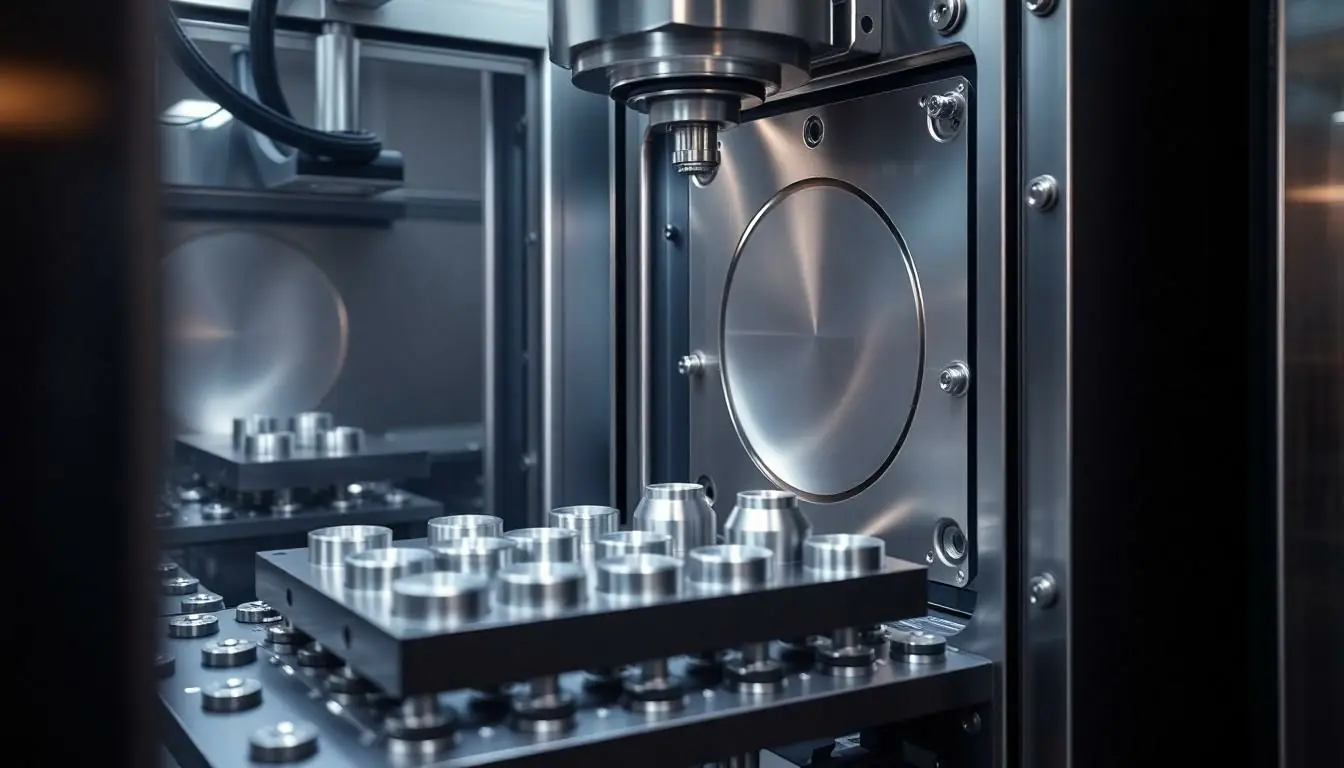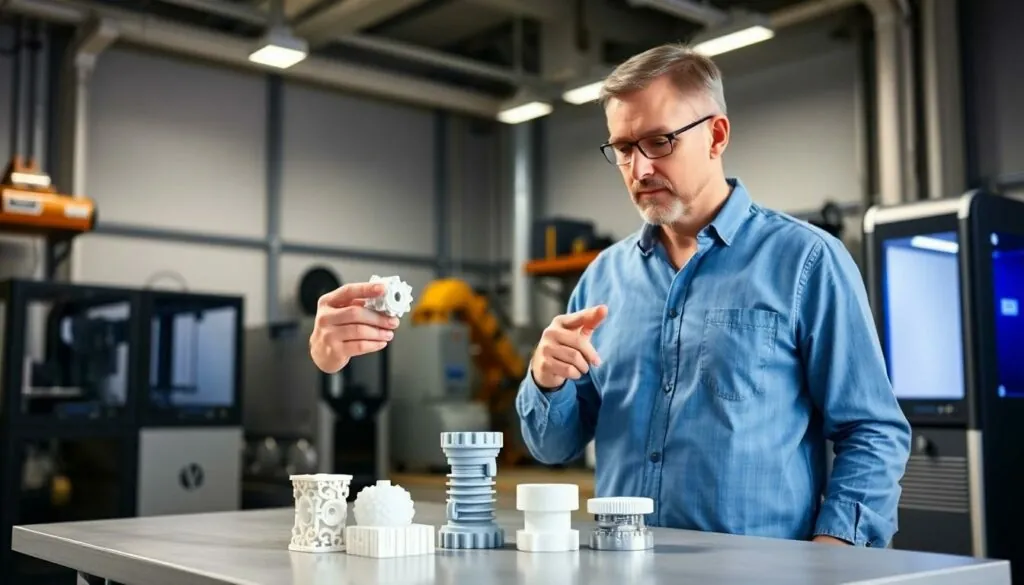In the world of manufacturing, two titans reign supreme: injection molding and 3D printing. One’s a seasoned pro with a reputation for speed and efficiency, while the other’s the quirky newcomer that promises creativity and customization. It’s like comparing a classic sports car to a flashy electric scooter—both have their perks, but which one revs your engine?
Table of Contents
ToggleOverview of Injection Molding vs 3D Printing
Injection molding represents a time-tested manufacturing process, known for producing high volumes of parts quickly and efficiently. This method employs molten plastic injected into metal molds, resulting in precise shapes and finishes, favorable for mass production. Particularly, it excels in creating consistent, uniform objects, making it ideal for applications in industries such as automotive and consumer goods.
3D printing disrupts traditional manufacturing through its additive layer technique, where materials are built upwards, forming shapes from digital designs. This technology supports intricate designs and complex geometries, offering solutions that injection molding may struggle to deliver. Variability in material options fosters creativity, allowing designers to experiment with various filaments and composites, significantly enhancing product customization.
Cost factors also play a crucial role in the comparison. Injection molding incurs higher upfront expenses due to mold creation, but yields lower per-unit costs at high production volumes. In contrast, 3D printing requires minimal setup, making it cost-effective for small production runs or prototyping, yet encompasses higher costs per piece at larger scales.
Material properties differ as well. Injection molding generally uses thermoplastics, which provide strength and durability, essential in many applications. 3D printing, however, can utilize diverse materials ranging from plastics to metals, ensuring that specific needs and performance criteria are met.
Environmental considerations arise when assessing both methods. Injection molding’s energy consumption can be substantial, while 3D printing typically generates less waste due to its additive process. Decisions made in the manufacturing realm increasingly consider sustainability and eco-friendliness, impacting the choice between these two technologies.
Advantages of Injection Molding

Injection molding offers numerous advantages that appeal to manufacturers, particularly in high-volume production scenarios.
Speed and Efficiency
Speed stands out as a principal advantage of injection molding. Manufacturers can produce thousands of parts in a short time frame due to the rapid cycle times involved. Typical cycle times range from 15 to 60 seconds per part, depending on design complexity and material used. Efficiency also emerges from automated processes, allowing for minimal labor costs and consistent output. Manufacturers find that they can scale production seamlessly, making injection molding ideal for large runs and industrial applications.
High Precision and Repeatability
High precision characterizes injection molding, ensuring that parts meet strict tolerances. The process creates consistent shapes with excellent detail, vital for industries demanding accuracy, such as automotive and medical devices. Repeatability becomes a key strength; once a mold is created, it can produce the same part repeatedly without significant variation. This reliability encourages manufacturers to trust the process for critical components, enhancing overall quality control. With injection molding, achieving tight tolerances of ±0.001 inches is common, making it highly desirable for precision engineering needs.
Advantages of 3D Printing
3D printing presents unique advantages that enhance its appeal in modern manufacturing.
Design Flexibility
Design flexibility stands out as a primary advantage of 3D printing. This technology allows for intricate shapes and complex geometries that traditional methods can’t achieve. With additive manufacturing, designers can easily implement changes, enabling rapid iteration during the design process. Customization becomes straightforward, catering to specific client needs or preferences. Furthermore, 3D printing supports a variety of materials, expanding creative possibilities beyond conventional plastics. The ability to create lightweight structures while maintaining strength leads to innovative applications in multiple industries, such as aerospace and architecture.
Lower Initial Costs
Lower initial costs represent another significant benefit of 3D printing. Unlike injection molding, 3D printing doesn’t require expensive molds, making it more accessible for startups and small businesses. Initial setup costs remain minimal, allowing for easier entry into the market. This cost-effectiveness proves advantageous when producing small runs or rapid prototypes, as companies can validate designs without substantial investment. Additionally, the shorter lead times associated with 3D printing facilitate quicker market entry and responsiveness to customer demands. Startups can adapt their products swiftly based on feedback, enhancing competitiveness in dynamic markets.
Comparison of Material Options
Material choices play a crucial role in both injection molding and 3D printing. Each technology brings unique advantages depending on the production needs and desired outcomes.
Material Versatility in Injection Molding
Injection molding typically engages thermoplastics like ABS and polypropylene. These materials offer strength, durability, and resistance to impact, making them suitable for demanding environments. Manufacturers utilize additives to enhance properties like UV resistance and flame retardance. Molding processes easily accommodate different colors and finishes, providing attractive visual options. Consider automotive parts and consumer products that benefit from injection molding’s efficient use of materials, resulting in minimal waste. Materials are readily available and cost-effective for high-volume runs.
Material Options in 3D Printing
3D printing showcases a broader spectrum of materials. Options extend from thermoplastics to metals, ceramics, and even bio-based materials. This versatility enables intricate designs and custom applications. Materials like nylon and PLA serve well for prototypes, while titanium and aluminum cater to aerospace and medical industries. Some printers utilize composite materials, enhancing strength and durability. Customization thrives in this technology as materials’ properties can meet specific project requirements. As a result, startups find 3D printing favorable, especially for low-volume production or rapid prototyping.
Applications of Injection Molding and 3D Printing
Injection molding and 3D printing serve specific roles across various industries. Each technology excels in its respective applications, enhancing manufacturing solutions.
Industries Utilizing Injection Molding
Automotive, consumer goods, and medical industries prominently utilize injection molding. Automotive manufacturers rely on injection molding for components like dashboards, clips, and housings due to its efficiency in high-volume production. Consumer goods companies produce items such as bottles, containers, and toys leveraging injection molding’s consistency and precision. Medical device manufacturers benefit from strict tolerances and repeatability, producing intricate parts like syringes and valves with robust thermoplastics, which meet regulatory standards.
Industries Benefiting from 3D Printing
Aerospace, architecture, and healthcare industries significantly benefit from 3D printing’s capabilities. Aerospace companies utilize 3D printing to create lightweight, complex components that enhance fuel efficiency. Architects take advantage of the technology to produce detailed models that visualize projects, facilitating client communication. Healthcare professionals use 3D printing for custom prosthetics and dental devices, meeting individual patient needs while reducing production time.
Choosing between injection molding and 3D printing ultimately depends on specific project requirements. Injection molding shines in high-volume production with its speed and efficiency, making it ideal for industries that demand consistent quality and precision. Its established processes cater well to traditional manufacturing needs.
On the other hand, 3D printing offers unparalleled design flexibility and material diversity, making it perfect for innovative projects and rapid prototyping. This technology allows businesses to adapt quickly to market changes and customer demands, fostering creativity in product development.
Both methods have unique strengths that can significantly impact manufacturing strategies. Understanding these differences helps companies make informed decisions that align with their goals and operational needs.



